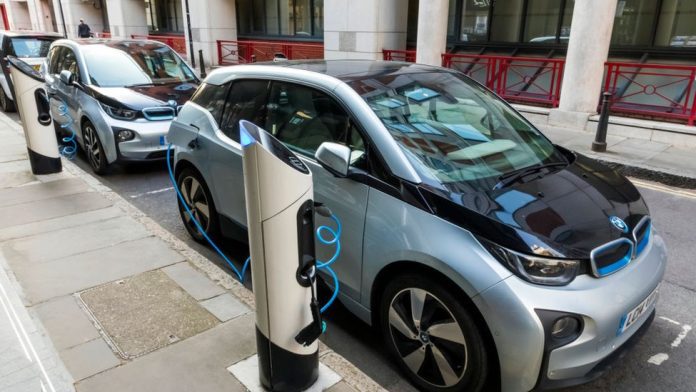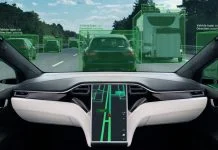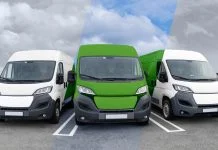In recent years, the electric car market has boomed, with sales rising and governments encouraging citizens all over the globe to go electric. However, electric cars can be complex, and understanding the benefits of switching isn’t always easy. That’s why, in this guide, we’ll be discussing everything you need to know about switching to an electric car to make your next vehicle your best one yet.
What Is an Electric Car?
Put simply, an electric car is a type of vehicle that is powered by electricity rather than traditional fuels like petrol or diesel. Unlike conventional vehicles, which rely on an internal combustion engine to generate power, electric cars use rechargeable batteries and electric motors to power the vehicle.
In the UK, most electric cars can be charged by plugging them into an electrical outlet at home or a specialised charging station – there are a growing number of these charging stations around the country, and often they can be found at petrol stations or in public parking areas. The electricity that they provide is stored in the car’s battery, with some electric cars having the ability to travel up to several hundred miles on a single charge!
Electric vehicles, or EVs, offer several advantages over their more traditional counterparts, including lower running costs, reduced emissions and quieter operation. As EV technology continues to improve, electric cars are becoming more accessible, affordable and practical for everyday use.
The Different Types of Electric Vehicles
If you’re not too familiar with electric cars, then it can be difficult to know what to look for when you first start to consider making the switch from a traditionally powered vehicle. There are three main types of EVs to look out for:
1. Battery Electric Vehicles (BEVs)
BEVs are vehicles that run entirely on battery power, with an electric motor that is powered by rechargeable batteries typically located under the floor of the car. As BEVs don’t have an internal combustion engine, like petrol or diesel-powered vehicles, they do not emit as much pollution, which makes them incredibly popular among environmentally-conscious customers. They must be charged using an external power source, such as a charging station or a regular electric outlet.
2. Plug-in Hybrid Electric Vehicles (PHEVs)
PHEVs are equipped with an internal combustion engine as well as an electric motor, which means that while they can be charged using an external power source, they can also run on petrol when the battery is depleted. They typically have a shorter electric-only range than BEVs, but some models provide extended range for longer trips. PHEVs are popular with a huge number of people, but they are particularly common among those who have a short commute to work or only use the car every so often.
3. Hybrid Electric Vehicles (HEVs)
Like PHEVs, HEVs also have an electric motor and an internal combustion engine, but their battery is charged by the engine and regenerative braking. HEVs therefore cannot be charged using an external power source. However, they do typically have better fuel economy and emit fewer emissions than traditionally powered pure petrol or diesel cars.
The Benefits of Switching to an Electric Vehicle
There are several benefits of switching to an electric vehicle:
Environmental Benefits
By far one of the most popular motivations among people who make the switch to an electric vehicle is the positive environmental impact of doing so. EVs have the potential to significantly reduce greenhouse gas emissions and improve air quality, and they don’t emit harmful pollutants like carbon monoxide into the atmosphere.
Lower Running Costs
EVs are generally cheaper to run than petrol- or diesel-powered vehicles – they have lower fuel costs, and electricity is generally cheaper than traditional fuels. Additionally, EVs also require less maintenance, as they have fewer moving parts, so it’s much easier to stick to a budget when running an EV compared to a car powered solely by a combustion engine.
Energy Security
Because electricity can be generated from a variety of sources, including renewable options like wind and solar power, EVs can help to reduce the UKs dependence on imported oil, and increase energy security for both individual households and the general population at large.
Performance and Convenience
Unlike petrol or diesel cars, EVs offer instant torque and smooth acceleration, which makes them really fun to drive. They’re also convenient to refuel, particularly in the case of BEVs, as you can charge them both at home and at public charging stations.
Government Incentives
Many governments, including that of the UK, offer incentive schemes to encourage the adoption of EVs among consumers, which can make the vehicles more affordable or offset some of the upfront costs of buying an electric vehicle. Some of the most popular schemes in the UK include the EV chargepoint grant, which provides funding of up to 75% towards the cost of installing a chargepoint at your home, as well as the Workplace Charging Scheme for businesses.
Not Quite Ready to Buy? Why Not Consider a Lease?
We know that buying a new vehicle is a big decision, but if you’re not quite ready to make such a commitment then leasing an electric vehicle might be the right move for you. Leasing an EV can have several benefits over buying one, including:
Lower Monthly Payments
Monthly lease payments are typically lower than loan payments for purchasing an EV. This is because you’re usually only paying for the depreciation of the vehicle during the lease term, rather than the full purchase price. When you speak with a salesperson, they’ll be able to discuss in more detail the differences between the monthly payments when you lease vs buy.
No Deposit
When leasing an EV, you typically don’t have to make a large deposit like you would when purchasing a vehicle outright or on traditional types of finance agreements. This can make it a lot easier to get into an EV without having to save up a large sum of money upfront, the value of which may depreciate quickly after your purchase.
Lower Maintenance and Repair Costs
Leasing an EV typically means that the vehicle is new and therefore covered under warranty during the lease term, which can help you avoid unexpected maintenance and repair costs.
The Newest Tech, Always
When you lease an EV, you’ll likely have the option to upgrade to a newer model at the end of the lease term. This means you can always be driving the latest technology without having to sell or trade in your old vehicle, and you can benefit from new and exciting features as soon as they’re available!
Depending on your circumstances, you might prefer to buy your new EV rather than lease it, but if you’re considering a lease then you can check out the electric leasing car guide from ElectriX to ensure that you’re making informed decisions at every stage of the process.
Whether electric vehicles are completely new to you, or you’ve found the electric car of your dreams, leasing rather than buying outright may be the perfect option for you. Whatever you decide, once you’re behind the wheel of your new car you’ll know you made the right decision when you made the switch to electric. From the lower running costs to the smooth performance, your EV will have it all – who knows where your new vehicle will take you?









